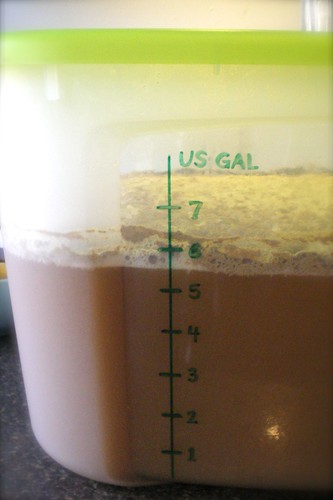Joe White Malting supplies the famous historic Coopers Brewery (most breweries in Australia and New Zealand, for that matter) so for the sake of this experiment my brew is inspired by their classic Coopers Sparkling Ale. I know we have many Australian (and Anglo-Australian ex-pat) members on this forum, I’d love to hear any comments/criticisms. Wally, I'm talking to you!
I couldn't source Pride of Ringwood hops, but they are reputed to be somewhat harsh anyway. I used Australian Ella/Stella hops instead, which are a half-sister of Galaxy with some Spalt parentage.
First impressions of Joe White Maltings Traditional Pale Malt:SEYMOUR AUSTRALIAN SPARKLING ALE
6 US gallons = 5 Imperial gallons = 22.7 Litres
GRAINBILL
88% = 9.86 lbs = 4472 g, Joe White Maltings Traditional Pale (Australia)
2.5% = .28 lb = 127 g, Thomas Fawcett Crystal Malt II 62-68L (England)
2.5% = .28 lb = 127 g, Aromatic Malt (Belgium)
7% = .78 lb = 354 g, Raw Cane Sugar Invert Syrup (homemade)
TOTAL: 11.2 lbs/5.08 kg
I struck the grains with 3.25 US gal/2.7 Imp gal/12.3 L water at 165°F/74°C which brought the mash to 149°F/65°C for 70 min, then I drained-off ≈2 US gal/1.7 Imp gal/7.6 L wort, which I brought to boil, then stirred back in to reach 170°F/76.7°C, rested 10 min, around 90 min total. I’m pretty sure the Coopers Brewery only mashes around 45 minutes.
In the meantime, I made some invert syrup using the raw cane sugar and some first-runnings, brought to boil with my little backpacking stove, added a few drops of lime juice and stirred frequently. I eventually added this to the big boil kettle.
I batch sparged a couple times, vorlaufing each time, to collect 7.5 US gal/6.2 Imp gal/28.4 L pre-boil.
I boiled 90 min, adding sugar syrup and a pinch of gypsum at the beginning.
HOPS
.35 oz = 10 g, Ella/Stella, first wort addition
.7 oz = 20 g, Ella/Stella, 15 minutes remaining
I chilled, racked to fermentor, aerated using Ditch’s drill-powered paint stirrer, then pitched yeast.
YEAST
Historic Coopers brewery strain, available as White Labs WLP009 “Australian Ale.”
STATS (approximately 73% brewhouse efficiency, 77% apparent attenuation)
OG: 1051
FG: 1012
ABV: 5.0%
IBU: ≈30
COLOUR: hazy golden with white foam
Very low aroma, relatively neutral like US two-row pale malt, as opposed to bready/nutty UK malts or husky/grainy German malts. However, the raw malt tasted a bit sweeter than US two-row pale, similar to CaraPils or English Mild malts. As expected, the resulting wort was slightly darker than a typical US pale malt. Unlike some really tough kernels, this malt cracked very easily, placing almost no strain on the grainmill. Considering this low mash temperature, lengthy 90 min mash and lengthy 90 min boil, I was a bit disappointed by only 73% efficiency. Of course, this is a tiny sample size, and could be entirely my own doing.
First impressions of Stella/Ella hops:
Big juicy fruit impression, tangy citrus but not exactly grapefruit, maybe more like lemongrass. Reminds me of aspects of Hallertau, Centennial, Citra (except smoother), as odd as that sounds.
First impressions of Australian Ale Yeast:
I made a yeast starter the day before, which was obviously vigorously fermenting, but there was zero foamy yeast head. I started to panic, but then I read this strain sometimes has no krausen. But after pitching it into the main batch, it has a big krausen. Weird. Has anyone else detected this kinda thing with Coopers Australian Ale yeast?
It was a fun outdoor group brewday hosted by my friend Jason. One of the guys, Timothy, is a member on this forum as well. He brewed a big strong Smoked Scottish Ale using McEwans yeast.
Ingredients
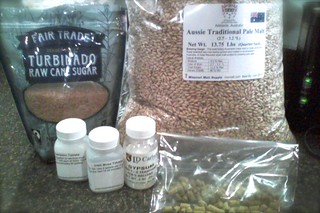
cheap Corona grainmill with electric drill attachment
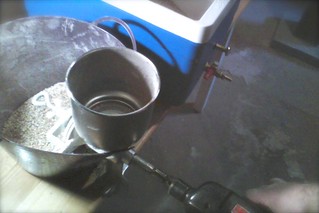
Driveway brewday
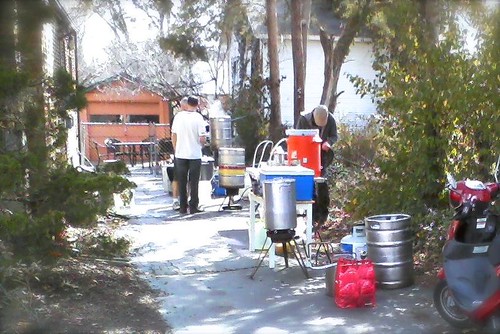
Mike C-Z and Timothy

Timothy sampling, Mike C-Z sparging
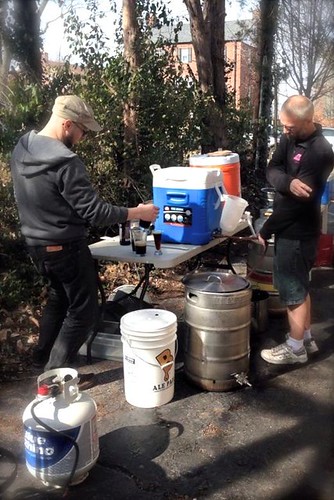
Jason and Timothy checking the boil progress
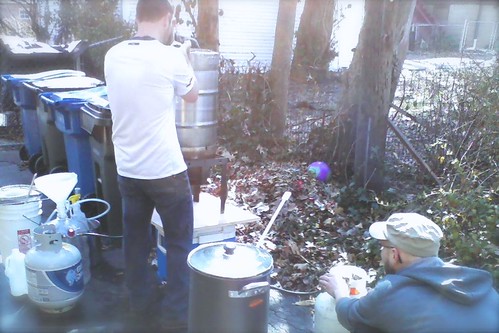
My little allotment
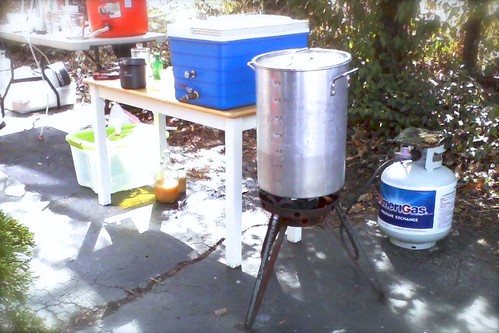
Backpacking stove for quick-and-easy invert syrup
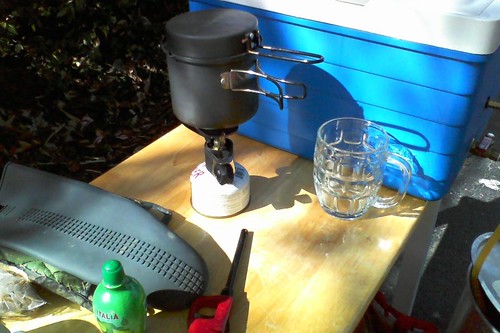
Timothy, yours truly, Gregg, Mike C-Z on a "coffee break"

My poor-man's Yorkshire stone square fermentor, hee hee
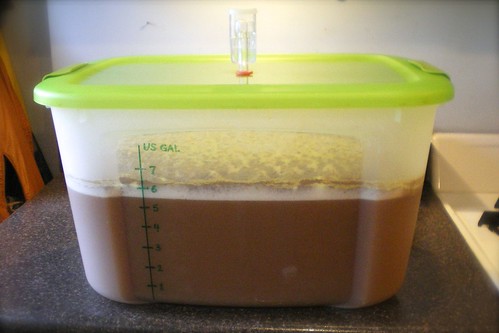
Close-up of the krausen
